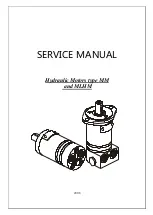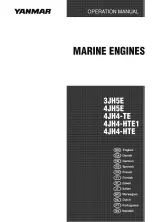
TC3x Multiplexer User's Guide
TC3x_UG_01_V03.10 -
Released
Page 29/50
10.01.2002
7.3.1 Flow Control
RTS/CTS on the physical channel:
It is recommended to use AT\Q3 when the multiplexer is switched on.
The customer application de- and encodes the data. It needs to respect the flow control given by the
MP. The flow control is transmitted in the data flow and contains information on whether a channel is
allowed to send or not.
The customer application must set RTS (in the direction of the module) on 1. It shall neither be used
nor switched off to prevent from loss of data (control data cannot send in that case).
RTS/CTS on the logical channels:
The customer application needs to regulate the data flow according to the logical flow control. The
implementation of the PC Mux is a good example. It maps the 3 decoded channels to 3 serial inter-
faces and the logical flow control information directly on the RTS/CTS-control lines.
In this case CTS superposes the STOP information (data sending disabled) sent by the module to
control the data transmission from the customer application to the module. If RTS is reset, a STOP is
transmitted to the module to control the data transmission from the module to the customer application.
Figure 14 illustrates the data flow.
MS
Module (TC35)
TE
Kundenapplikation
(PC-Mux, Mux-Treiber)
Multiplexer
Protocol
GSM 07.10
Multiplexer
Protocol
GSM 07.10
ser
IO
ser
IO
COMX
COMY
COMZ
gipsy
Remote
Control
RTS/DTR
RTS/DTR
Kanäle 2,3:
RTS
(/DTR)
Kanal 1:
RTS/DTR
Controller
(mappt RTS/DTR der
ungeframten Kanäle
auf log. FC)
RTS/DTR
logical flow control
HW Flow control
Flow control between the applications
DTR/DSR:
When the MP is active only coded Channel 1 transmits DTR non-transparently. When DTR is used as
a signal (for example to hang up a call with AT&D2), please keep in mind that the multiplexer cannot
transport this signal in real time. Please use a certain gap time between signaling with DTR/RTS.
Ring/DCD:
Contrarily to all other lines DCD and Ring are still transmitted on the UART directly by the module.
However, the customer application must carefully decide how to handle the RING line and it should
make sure, that no conflicts occur between the different channels. E.g. in some situations it may be
advisable to only display RING on channel 1.
Figure 14: Flow control – RTS/CTS signaling
















































